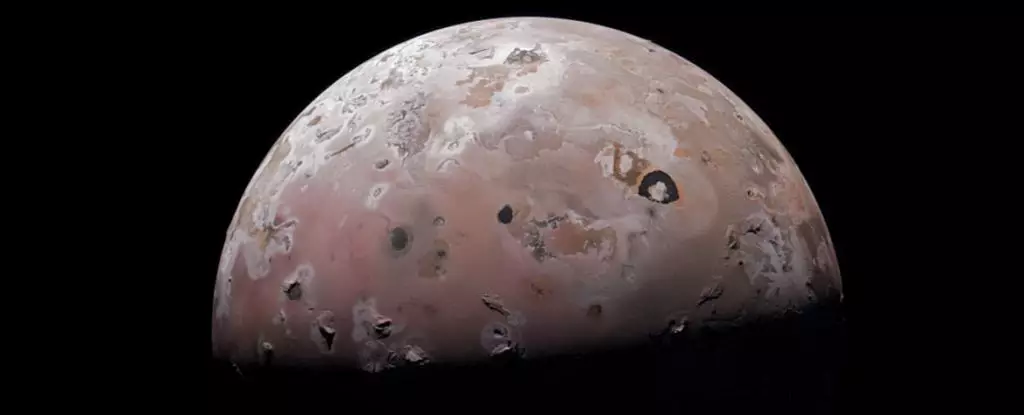The Solar System is a treasure trove of celestial wonders, and the recent unveiling of Jupiter’s moon, Io, in stunning detail has left scientists in awe. On 30 December 2023, the Juno probe made history by conducting its closest flyby of Io to date, capturing breathtaking images that showcase the moon’s volcanic activity. With its surface adorned in sickly, sulfurous hues and mottled with mesmerizing features, Io stands as the most volcanic object in our Solar System. This remarkable achievement grants scientists a unique opportunity to delve into the peculiarities of this otherworldly moon and unravel its mysteries.
Io, although slightly larger than Earth’s Moon, is a hotbed of volcanic activity. A closer look at its elliptical orbit around Jupiter, reveals the powerful gravitational forces exerted by the gas giant. These forces create tremendous stress on the moon’s interior, generating an immense amount of heat that keeps Io in a molten state and predisposes it to constant eruptions. Moreover, the gravitational influences from the other Galilean moons contribute to Io’s rampant and fiery volcanism, resulting in approximately 400 active volcanoes, with around 150 erupting at any given time.
The volcanic gases emitted by Io do not confine themselves to the moon’s vicinity. Instead, they are pulled out into a torus of plasma encircling Jupiter, following the planet’s magnetic field lines. This intricate interplay gives rise to powerful and permanent auroras at Jupiter’s poles. Studying Io allows scientists to unravel the complex relationship between the moon, its volcanic activity, and the larger Jupiter system. By collecting valuable data, researchers aim to better understand Io’s immense volcanic activity, determine if a magma ocean exists beneath its crust, and comprehend the significance of the relentless tidal forces exerted by Jupiter upon this tortured moon.
Juno’s recent flyby is just the beginning of a captivating journey of exploration. As the probe gears up for another close rendezvous with Io on 3 February 2024, anticipation grows, as it promises to capture even more astonishing images and yield invaluable insights into this enigmatic moon. Juno, which has been in Jovian orbit since 2016, continues to operate during its three-year mission extension despite signs of instrument degradation. Its mission is expected to run until September 2025, or until the spacecraft reaches its breaking point, whichever comes first. While Io remains a focal point of interest, Juno’s scientific endeavors extend to the other Galilean moons and the giant planet itself.
The exploration of Io and the Juno mission represent humanity’s insatiable thirst for knowledge about the cosmos. By delving into the volcanic depths of this captivating moon, scientists hope to expand our understanding of not only the peculiarities of Io but also the intricate interplay between Jupiter and its moons. Through the lens of Juno, we are granted a front-row seat to witness the grand dance of fire and fury that unfolds on Io’s surface. As we eagerly await the images and data from the upcoming flyby, we can revel in the knowledge that the enigmatic moon continues to unveil its secrets, one volcanic eruption at a time.



Leave a Reply